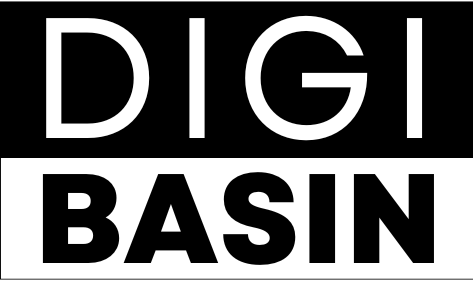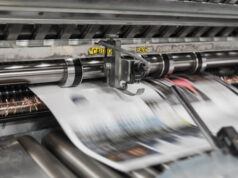When a client first asked me whether a Trading 212 cash ISA was safe, I didn’t answer with marketing lines. Instead, I gave them structure: what protections exist, how the product works, and where the real limits are.
If you want a clear, practical answer in 2025, here it is: Yes! Trading 212 Cash ISA is generally safe, provided you understand how your money is held, what FSCS covers, and the difference between cash and investment risks.
Below, I’ll walk you through the facts, the safeguards, and the steps you should take before placing large sums there.
What the Product Actually Is (and Why That Matters)
Trading 212’s Cash ISA is a tax-free savings account that pays a variable AER and lets you withdraw your money when you need it. The rate tracks market conditions and can move with the Bank of England base rate.
At the time of writing, Trading 212 publishes a competitive variable rate and advertises daily interest paid monthly. That means you earn interest tax-free, while still keeping instant access.
Who Watches Over Trading 212?
Safety starts with regulation. Trading 212 UK Ltd is authorised and regulated in the UK, so it must follow strict rules around client money and reporting. In plain terms, that regulation forces separation between the firm’s own funds and client deposits. Regulation alone does not guarantee zero risk, but it does set a legal framework that protects retail customers.
Also Read:
- How to Make a Full-time Income with Trading 212 as a Stock Trader
- Differences Between CFD and Real Stock Trading Explained Simply
- How to Set Stop Loss and Take Profit on Popular Trading Platforms
How Your Cash Is Protected
The single most important protection for depositors in the UK is the Financial Services Compensation Scheme (FSCS). Trading 212 states that uninvested client cash held via its services is protected up to the standard FSCS limit (currently £85,000 per eligible person, per authorised firm/bank).
In practice, Trading 212 places client cash with partner banks and discloses how funds are distributed, which helps with transparency. If a partner bank were to fail, FSCS cover would apply up to the limit for each bank used.
Put simply: your deposits are not pooled into Trading 212’s trading accounts; they sit in separate bank accounts and, therefore, benefit from FSCS protection within the usual compensation limits. That’s the key reason many savers feel comfortable using the product.
Cash ISA vs Stocks & Shares ISA
Don’t conflate the two. A Cash ISA holds cash in bank-style accounts and benefits from FSCS protection. In contrast, a Stocks & Shares ISA holds investments; some uninvested cash inside that product may be placed into money market funds (QMMFs), which are investment vehicles and are not FSCS-protected in the same way.
If you move money between ISA types, check where the provider places uninvested cash. Trading 212 clarifies these differences in its help pages.
Practical Risks You Should Know About
- FSCS limit exposure. If you hold more than £85,000 with one bank, the excess is not FSCS-covered at that bank. Trading 212 reduces this risk by spreading deposits across multiple banks, but your total protection depends on which banks you (or the platform) use and whether you already hold money with the same banks elsewhere. Always check the bank breakdown in the app.
- Rate volatility. The advertised AER is variable. Consequently, your interest income will change when the Bank of England base rate moves. If you want a fixed return, a fixed-term Cash ISA from a high-street bank might suit you better. Trading 212’s rate is competitive among instant-access providers, but it is not fixed.
- Platform operational risk. Like any fintech, Trading 212 depends on systems and partnerships. The safeguards (segregated accounts, reporting rules, FCA oversight) significantly reduce the odds of customer losses due to operational problems, but they do not remove the need for personal vigilance.
How I Treat Deposits in Trading 212 in Practical Terms
From a trader’s mindset, I recommend a layered approach:
- Check the app: Trading 212 lists which banks hold cash and the percentage allocated to each. Use that to estimate FSCS coverage.
- Avoid single-bank concentration: If you already have significant deposits at Barclays or NatWest, for example, verify whether Trading 212 uses those same partners. This is because duplication reduces extra FSCS protection. Community threads and the app can reveal practical details, but use official disclosures as your primary source.
- Keep excess cash diversified: If you have more than £85k in liquid savings, consider splitting sums across multiple FSCS-eligible providers to broaden protection.
- Match product to goal: Use the Cash ISA for emergency or short-term savings. For long-term growth, consider a Stocks & Shares ISA (accepting market risk) instead.
Does Trading 212 Offer Good Value?
Yes, in 2025, Trading 212 has been competitive on easy-access Cash ISA rates compared with many banks. That means you can earn a decent tax-free return with instant access, which appeals to savers who need flexibility. However, always compare the current AER and the provider’s terms before moving large sums. Rates move quickly, so a snapshot from today may be different in six weeks.
Also Read:
- Long-Term vs Short-Term Stock Trading: Which One Is Safer for Beginners?
- Technical Indicators Every Beginner Trader Should Know
- Top 10 Mistakes New Stock Traders Make in the First 30 Days
Final Verdict — Safe, with Caveats
If you ask whether Trading 212 cash ISA is safe in 2025, the answer is: yes, for most savers. It operates under FCA rules, uses segregated accounts and partner banks, and offers FSCS protection on deposited cash up to the legal limits. Nevertheless, “safe” is relative: prudence requires checking which banks hold your cash, understanding FSCS limits, and not relying on a single provider for all your liquidity needs


















